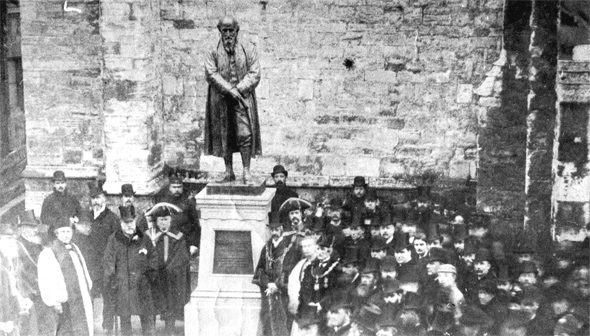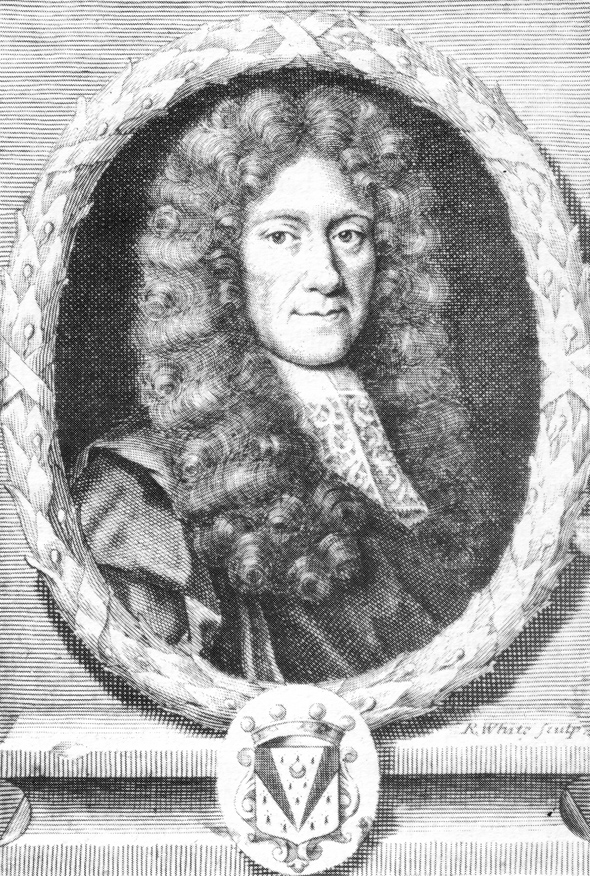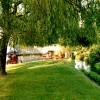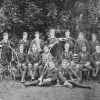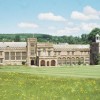Within the space of twelve months the nation lost two of its great Victorian social reformers. Following the death of the 7th Earl of Shaftesbury in 1885 another Dorset man who shared a concern about the poor and elementary education passed away in 1886; he was William Edward Forster.
Born in Bradpole, a parish in the west of Dorset on the 11th of July 1818, he was the son of William and Ann Forster, ardent workers for the Quaker cause who travelled widely to promote Quaker principles. Even while pregnant his mother went to Ireland to encourage the meetings of Friends there. They had their son educated at a Quaker school; lacking a formal University education he abandoned his plans for a career in the law instead steering a course into the world of trade and commerce, successfully entering the wool business in Yorkshire.
Jane Martha Arnold, the eldest daughter of Dr Thomas Arnold, became his wife in 1850. In the church at Ambleside there is a memorial window dedicated to him. William and Jane were not blessed with children of their own but on the death of Jane’s brother William in 1859 the Forster’s took in and later adopted his four children. Marrying Jane Arnold, who was not a Quaker, brought Forster into conflict with the movement and he was excommunicated for marrying her. Later he joined the Church of England.
William travelled to Ireland with his father in 1846-47 to distribute aid in the Connemara. His time there left a lasting impression on him and he started to take an interest in the troubles in Ireland and elementary education at home. He also took an interest in anti-slavery: his father died in Tennesee in 1854 while he was on an anti-slavery mission for the Quaker movement.
He grew-up at a time when wages in the south west of the country fell to three shillings a week, resulting in most agricultural workers relying on some support from the parish. This was a time of hayricks being fired, threshing machines destroyed, and there were widespread riots in 1830. Over half of the parishes in rural areas lacked schools. Forster said of his own parents: “they are as poor as rats… keeping neither carriage, nor gig, nor horses, only a small pony…and our house is quite a cottage.”
It was against this backdrop that William Forster began to take a more active role by speaking and lecturing. He summed up his political aims thus: “If I had to take part in the administration of affairs in this country, I would strive to accomplish two great purposes…to give relief, and lasting relief to poor Ireland; and get the children of the working classes out of the gutter, by educating them”. He was destined to tread the corridors of power and was true to his ambitions.
In 1859 he stood for election to Parliament, but was unsuccessful as the Liberal candidate for Leeds. He tried for Parliament again two years later and he was returned unopposed to represent Bradford and again in 1865, 1868, and 1872.
He contributed to Parliament’s debates on the Civil War in America and in 1868 was made Under-Secretary of State for the Colonies. He brought in Education Bills in 1867 and 1868 and when the Liberal Party formed the government that year he was appointed Vice-president of the Council and tasked with the job of formulating a government measure for national education. Forster was the architect of the Elementary Education Act passed in 1870 and he was responsible for seeing the Ballot Act of 1872 through Parliament.
Strongly tipped to become leader of the Liberal party he would not allow his name to be put forward. He was elected to the Royal Society and became Lord Rector of Aberdeen University. In 1876 he visited Serbia and Turkey.
When Gladstone was returned to office in 1880, Forster was appointed Chief Secretary for Ireland and held the position until May 1882. This role put his life in harms way and on his frequent visits to Dublin he was escorted by mounted and armed police: several attempts on his life were thwarted. The Nationalist press nicknamed him Buckshot because they believed he had ordered its use by the police when firing on a crowd. Forster resigned on 2nd of May 1882 after Gladstone announced the government’s intention to release nationalist prisoners; a few days later his successor, Lord Cavendish, was murdered in Dublin. His political record in education and anti-slavery are all over shadowed by his time dealing with the troubles in Ireland.
The census records give us an insight to how his influence and power grew. In 1851 he is living with his wife, sister in law, and three servants at Otley in the West Riding of Yorkshire, and he is described as a Worsted Stuff Manufacturer. A decade later William and Jane Forster are to be found in Guildford Street, St. Pancras, London and the record shows two nieces and one nephew are with them. There is a governess and four servants; he is described as an M.P., Spinner and Manufacturer.
At the height of his influence in 1881 we find him and his family at 80, Eccleston Square, St. George, Hanover Square, London. The record confirms he and his wife have adopted their nieces and nephew who are now in their twenties. The family enjoys the support of a lady’s maid, cook, upper housemaid, two footmen, under housemaid and a kitchen maid. He is described as M.P. Chief Secretary to the Lord Lieutenant of Ireland.
William Edward Forster passed away on the 6th of April 1886.
